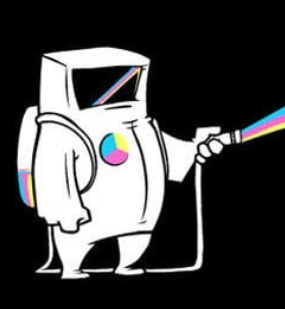They say it’s a picture of atoms, but what are the atoms: the glowing yellow balls or the entire meatball including the darker red? If it’s the meatballs, then why do some have apparently two nuclei?
Here’s the public press release: https://news.cornell.edu/stories/2021/05/cornell-researchers-see-atoms-record-resolution
Here’s the actual scientific article: https://www.science.org/doi/10.1126/science.abg2533


“The high–spatial resolution phase image of Fig. 2A is borne out by quantitative analysis. In real space, the Pr–Pr dumbbells with a separation of only 59 pm are resolved with a contrast of 63% (Fig. 2B), which is better than the 73% contrast for two point objects separated at the Rayleigh criterion. Therefore, the Rayleigh resolution of the image is much better than 59 pm. Nevertheless, the exact resolution can be determined only after considering the finite atomic size instead of assuming point objects (28). We can also resolve the O–Sc–O triple atom projections, even though the light O atoms are only 63 pm (26) from the heavier Sc atoms “
They are looking at a crystal lattice of PrScO3
Saying the same thing as the text doesn’t help anyone.
It helps those that know how to read the text… It clearly states that those are Pr-Pr dumbbells in the PrScO3 lattice that you are seeing. Also, you should be seeing some O-Sc-O triplets, but I didn’t look for them.
This is a picture of a crystal of a molecule made up of three different types of atoms.
I’m too tired to help you more, right now, sorry.
OP specifically asked:
I’m sure if OP understood the text, this wouldn’t have been asked.
Indeed.
I gave the OP the benefit of the doubt that it didnt know where to look in the article for the description of the image.
Will stop trying to help, sorry.
You didn’t do any of this. You just were condescending to the OP. It doesn’t help people to be more interested in Science.
Good thing you stopped “helping.”
Edit: Sorry if I sounded aggressive. I see that you replied to a different comment and appreciated their simpler explanation.
I will definitely wait until i see that there are actually 0 replies after a day before I reply to anything science related.
I dont feel welcome here and good bye.
Or you could just accurately answer the question. This community is called “AskScience” after all. Then use the links or excerpts from the papers or articles as a backup.
To put it in English, each blob is an atom, the thing as a whole is a crystal lattice of praseodymium orthoscandate (PrScO3).
In the article, figure 1d and 1e annotate the image to tell you exactly which part is which. The bright pairs are Pr-Pr, the single bright blobs with wings are O-Sc-O, and the dimmer blobs standing alone are O.
By my count that means each repeating section has two Pr, one Sc, and four O, which doesn’t add up to me, given the chemical formula PrScO3. But maybe that’s because they’re arranged in three dimensions and we’re only looking at two. I haven’t read the full article.
Thank you for that